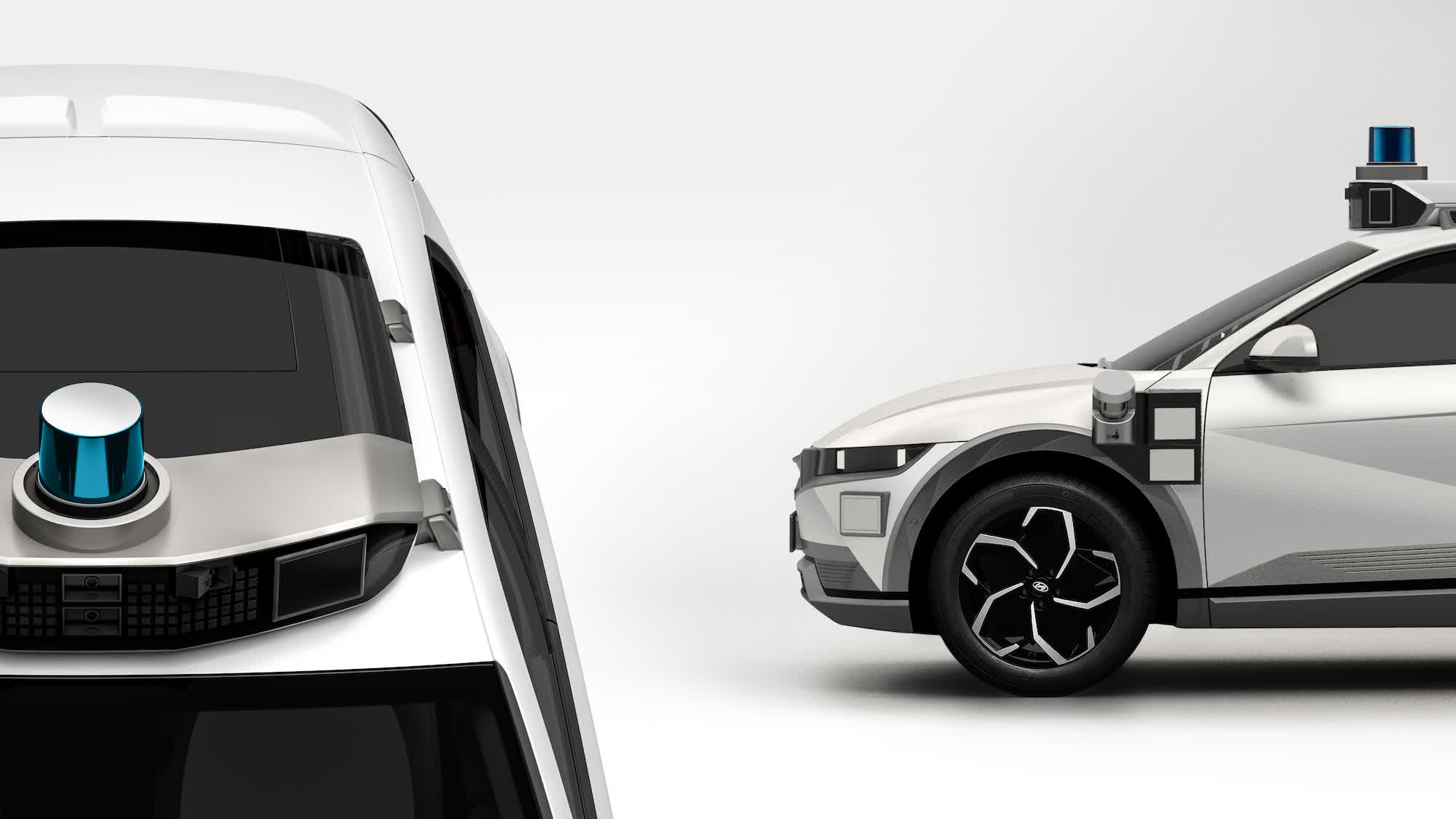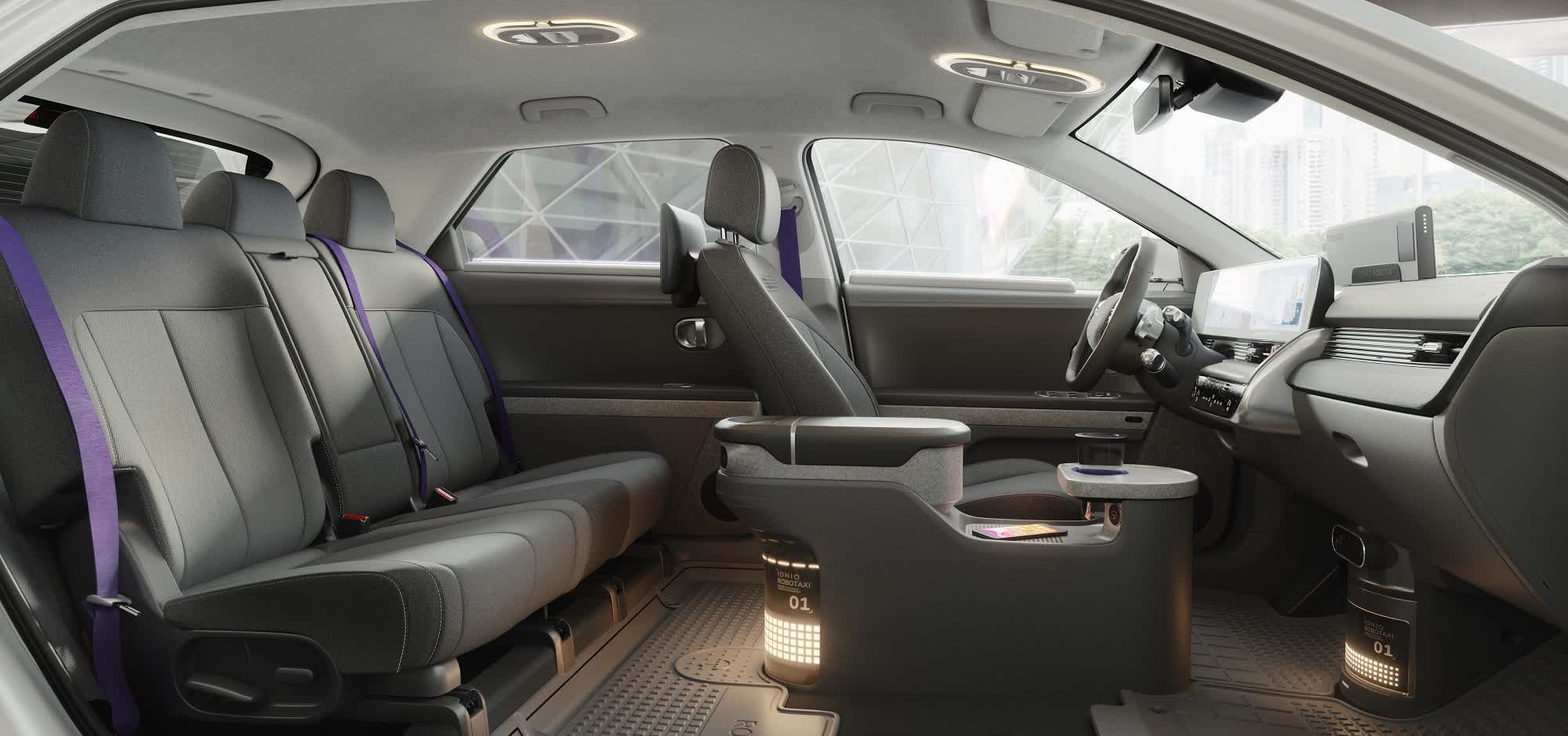Motional reveals the Hyundai-built robotaxi coming to the Lyft app in 2023
What just happened? Automated driving systems (ADS) company Motional, a joint venture between Aptiv and Hyundai, has revealed the first images of its upcoming robotaxi and some details well-nigh the vehicle. It says that past 2023, people in certain cities will exist able to hail the autonomous SUV via the Lyft app.
The robotaxi version of the Hyundai all-electric Ioniq five is fitted with Motional'southward autonomous vehicle engineering science. The equipment includes more than 20 sensors, such as cameras, radar, and lidar, which are highly visible on the exterior and inside of the SUV. They provide a 360-degree field of vision, including high-resolution images and the ability to come across objects from 300 meters away.
"Nosotros see and then many competitors bending over backward to try to hide this sensor suite and muffle information technology in these large plastic casings," Iagnemma told TechCrunch. "And the fact is, you lot can't hide the sensors. They need to be where they demand to be and they're an important role of the car and a key office of the technology. So our strategy was to celebrate the sensors, and to adapt the design linguistic communication of the vehicle and bear that through the pattern of the integrated sensor suite."

The vehicle is able to operate at Level four autonomous driving. That's classed as High Driving Automation, meaning it can operate in self-driving mode without a person behind the wheel, though only within a limited area.
The Hyundai Ioniq 5 is the showtime to use the automaker's defended battery electric vehicle platform: the Electric Global Modular Platform (E-GMP). The vehicle uses an 800-volt electric system, which supplies the same amount of power as the more common 400-volt with less current. Information technology as well supports DC fast charging at 350 kW, allowing the battery to charge from 10% to 80% in about 18 minutes. Hyundai adds that the Ioniq 5 can manage nearly 300 miles of range on a unmarried charge.

Motional says that E-GMP will provide "passengers with a spacious, comfy place to work, relax, or socialize during their driverless ride." At that place will be interior displays that allow passengers to interact with the vehicle; one example given is adding extra stops to a journey. But something passengers won't exist allowed to exercise is sit down in the empty driver's seat, sadly.
Source: https://www.techspot.com/news/91038-motional-reveals-hyundai-built-robotaxi-coming-lyft-app.html
Posted by: novackalear1941.blogspot.com


0 Response to "Motional reveals the Hyundai-built robotaxi coming to the Lyft app in 2023"
Post a Comment